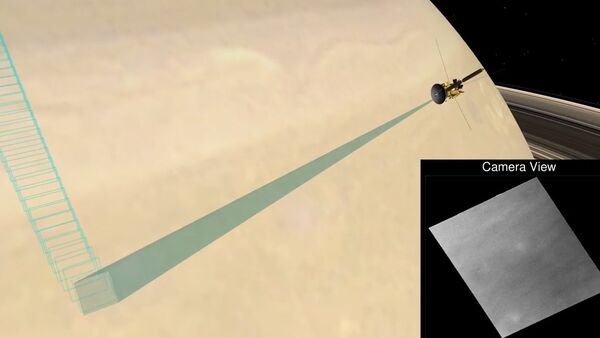The Cassini spacecraft, which is winding up its exploratory mission to the solar system's sixth planet, has snapped an extraordinary new video of Saturn as it dived between the planet and its rings on April 26.
The probe dived from an altitude of 72,400 to 6,700 km to shoot the video, giving the images a resolution of up to 810 meters per pixel.
Kunio Sayanagi, an associate of the Cassini imaging team based at Hampton University in Virginia, said that the sharp contours of the planet's surface were a surprise.
"I was surprised to see so many sharp edges along the hexagon's outer boundary and the eye-wall of the polar vortex."
"Something must be keeping different latitudes from mixing to maintain those edges," Sayanagi added.
On April 22 it began the final stage of its mission, a set of several plunges between the planet and the inner edge of its rings in order to send scientists information about Saturn's gravitational and magnetic fields and the composition of its rings and clouds.
After it has completed the mission, Cassini will maneuver into the upper atmosphere of the gas giant planet and burn up like a meteor.
Scientists think that two of Saturn's moons, the icy Enceladus and methane-rich Titan, might be able to host some form of life. Cassini's fiery end removes any chance of the probe someday colliding with a moon and contaminating it with microbes from Earth that managed to survive the trip across the solar system.


